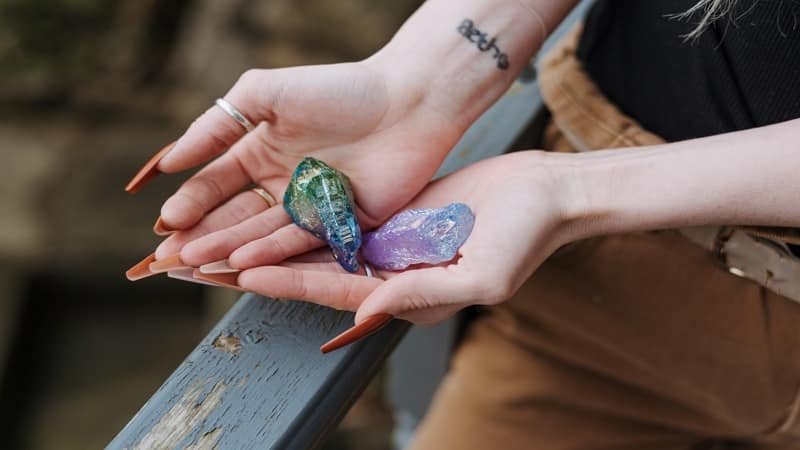How Are Opals Mined?

Table of Contents
Opals are typically multicolored, comprised of small silica spheres in regular patterns with water accumulated between them. These spheres diffract light, breaking into the entire color spectrum through a process known as ‘opalescence.’ It is this unique feature that affords opals their popularity amongst jewelers and goldsmiths. But, how are opals mined?
Unfortunately, these luminous little gems are not always so easy to find. And even if you are lucky enough, retrieving them is even harder. The end result may be great but the process is an arduous one, beginning with a trip to some of very far-flung regions of Brazil, Mexico and Australia – the opal mining hub of the world.
Finding the Opal
Opals were first mined in Queensland, Australia, in 1875. Today, Coober Pedy is the largest producer. Historically, miners would use sticks and shovels to ‘test’ the land for gemstones and go onto digging.
Today, however, mining has become quite mechanized and most exploration is done via drilling. The 9-inch auger drills are a favorite amongst miners as they can recover fairly large samples of opalized zones. Many rigs have wet and dry rotating screens to separate harder drill chips. Also, since opals are usually found in ‘structural traps’ in the ground, geo-physical surveys via magnetic, seismic and ground-penetrating radars are also used.
Digging out the Opal
Once the treasure has been found, the digging begins. A vertical shaft about 1 meter in width is drilled, giving a bulk sample of about 1 cubic meter or more of dirt. This sample is subsequently washed and sieved through for opal fragments.
If good quality opals are found, further tunnels are dug into the ground with hydraulic excavators. The material can either be sucked up to the surface through a blower or hauled up using automatic winches.
Trench Searching
Parts of Queensland employ another similar but slightly less complicated approach. In trench searching, the excavator digs a 3 meter to 4 meter deep hole into the ground – or until it hits bed rock. Then, miners can simply jump in and examine the sides of any opal fragments.
Opal Divining
This practice is similar to divining in water, where miners use rods to feel or move through. This method is typically done in certain areas where scrub growth indicates opals underground. But mind you, opal divining has rarely ever unearthed opals that are commercially viable.
Open Cut Mining
This may be the most thorough form opal mining but unfortunately, it can be very heavy on the pocket. Open cut mining is expensive because every little bit of dirt gets cleared out and so, even the most hidden of pockets of opal are not overlooked. If you’ve got the budget, this is the way to go because usually, it involves high digging costs and extensive use of machinery. Not to mention, must back fill and re-vegetate the area, even if you did not manage to find any opals.
Environment-friendly Excavation Methods
Some of the newer, more socially-responsible methods of opal mining involve using special excavators that keep the dirt deposits closer to the surface. Usually, miners employ this particular process while working in shallow grounds. They dig holes about 20 meters wide as explore the area for opal pockets, all the while back-filling as they proceed.
Sorting out the Opals
The dirt retrieved is then loaded into a machine called the dry agitator. Herein, the fragments are tumbled and washed for several hours at the end of which, they are sorted by hand in hopes of finding the elusive opal. Whatever is found is sent along for assessment, cutting, polishing and the ultimate goal: sale.
Bear in mind that at times, good quality fragments get cast aside during the sorting process, leading to greater wastage. To prevent this, some miners indulge in a practice called ‘noodling’ wherein they search through heaps of old dirt for opal fragments that might have been missed in the initial screening.
Cutting, Polishing and Mounting the Opals
In the last stage of opal farming, the stones undergo a beautification process to make them presentable for sale.
Each opal is bought by the trader or jeweler, usually in the ‘rough cut’ phase. This means the stone is pretty much in its natural state, albeit a bit of cleaning. You can expect different buyers to inspect the opals in their own difference ways but of course, they will all want to further cut and polish them according to the settings they have envisaged for them.
Opals may be sold as solid pieces, Opal Triplets ( thin slivers of about 0.5mm thick, sandwiched between backings made of black plastic or industrial glass), Opal Doublets (slightly thicker slices, usually greater than 2mm, shaped and polished to a cabochon style) or Matrix Opals (solid blocks with of non-opal materials). In some instances these are dyed to darken the enclosing rock, making it more appealing to the naked eye.
Our final thoughts
There are many different ways in which miners can get their hands on opals – some bear more fruit than others. Irrespective of which method one chooses, they must ensure they are operating with the best interests at heart. Areas surrounding the mines should not be harmed and special measures must be undertaken to ensure risk minimization and miners’ health and safety.